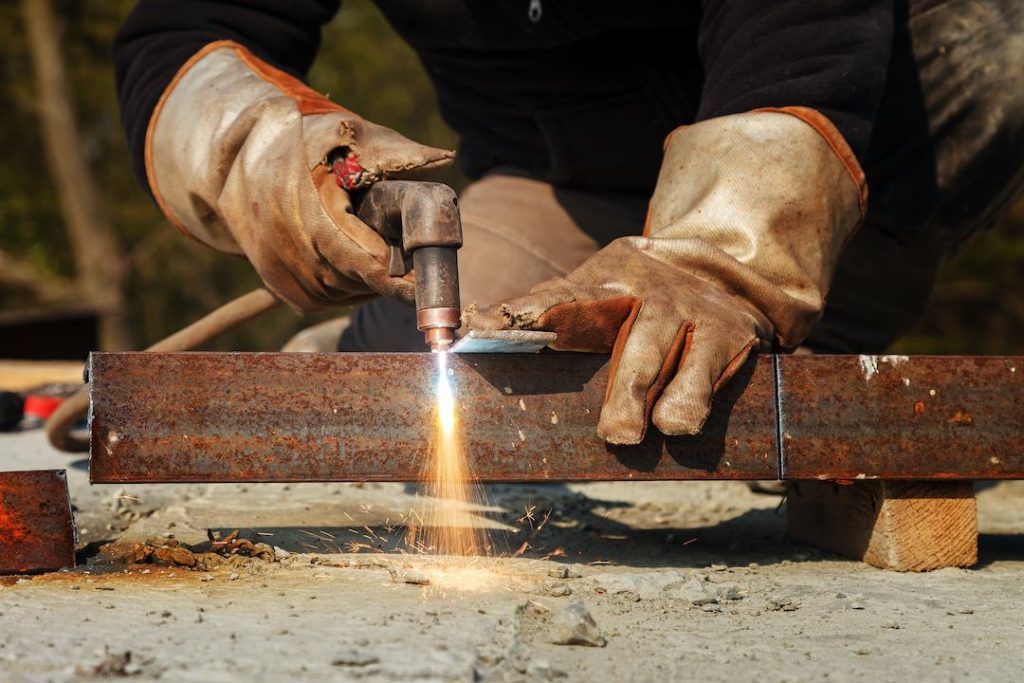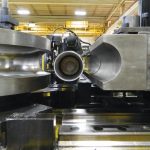Plasma cutting welding machines have revolutionized the field of metal fabrication and welding. These cutting-edge machines utilize a high-velocity jet of ionized gas, known as plasma, to cut through various types of metal with precision and efficiency.
The metalworking industry makes extensive use of plasma cutting, a method that is well-known for its accuracy and efficiency to cut through metal. The process includes the use of a plasma cutting welding machine, which is a high-velocity jet of ionized gas, in order to effortlessly cut through a variety of metal structures. However, what a lot of people may not understand is that the selection of the gas that is used in the plasma cutter is a significant factor in determining the level of success that the cutting process achieves.
When it comes to plasma cutting, the gas’s main use is to make the process of creating and maintaining the plasma arc easier from the beginning. In order to properly melt the metal and make it possible to cut it, this arc, which is formed among the electrode and the workpiece, reaches temperature of up to 30,000 degrees Fahrenheit. During the process of removing molten metal from the cutting region, the gas acts as a conductor for the electric current and assists in the removal of the metal.
In plasma cutting, there are a few different kinds of gases that are often employed, and each of these gases has its own set of benefits. One of the gases that is used the most often is compressed air, which is well-known for being easily accessible and inexpensive. Because it is capable of producing strong cutting performance on a broad variety of metals, air compression is a flexible option that may be used for a variety of purposes.
Typical Sorts Of Gases That Are Used In Plasma Cutting
When it comes to plasma cutting, choosing the appropriate gas is really necessary in order to get the best possible outcomes. When it comes to the cutting process, the benefits and qualities that are offered by various gases may have a considerable influence on the operation. This article will discuss some of the most prevalent kinds of gases that are used in plasma cutting welding machine.
- Oxygen (O2): Because of its low cost and widespread availability, oxygen is often used in plasma cutting. The cutting performance it offers for carbon steel is exceptional, and it is often used for applications that need heavy-duty work. Oxygen increases the speed of the cutting process and results in a clean and smooth cut. However, it is essential to keep in mind that the use of oxygen necessitates the implementation of appropriate safety measures due to the fact that it has the potential to stimulate combustion and raise the danger of fire.
- Nitrogen (N2): Nitrogen is yet another chemical that is often used for plasma cutting. This tool is often used in situations where clean cuts are needed, notably for aluminum and stainless steel. Nitrogen has the benefit of causing low oxidation on the cut edges, which ultimately results in a finish of superior quality. Furthermore, it helps to avoid the creation of nitrides, which may have a detrimental effect on the characteristics of the material.
- Argon (Ar): Argon is generally used for plasma gouging, which is a technique that includes removing metal for the purpose of weld preparations or repairs. It is especially useful in applications involving stainless steel because it offers superior control and reduces heat distortion to a minimum. Argon, on the other hand, is not commonly used for normal plasma cutting because of its low capacity to generate high cutting speeds via plasma cutting.
There Are Four Essential Guidelines To Keep In Mind.
Choosing the most appropriate gas to utilize is contingent upon three key factors: the quality of the cut, the productivity, and the economics.
- Material: Utilize oxygen plasma and air shield for mild steel in order to get a clean and smooth cut quality, the lowest possible dross levels, little rework, good weldability, and excellent productivity.
- With nitrogen plasma and air secondary, you can get the highest possible cut quality on stainless steel and aluminium under.5 inches. This will strike the ideal balance between cut quality and cost-effectiveness. If you want a cut that is somewhat better and quicker, use carbon dioxide as the secondary. The highest edge quality may be achieved with the use of a water shield, provided that your system permits it.
- The thickness is more than 0.5 inches. When cutting thick stainless steel or aluminium, using argon hydrogen with nitrogen secondary will result in the greatest possible cut quality. Additionally, check to see that your system is outfitted to support the safe functioning of argon hydrogen gas.
- The budget. When it comes to choosing Plasma cutting welding machine the cutting aluminium, mild steel, and stainless steel, the best option is to use shop machine gas that is clean and dry. This combination offers the most cost-effective cutting.
By following these best practices for using plasma cutter gases, you can ensure precise, clean, and efficient cuts, making the most of your plasma cutting welding machine for your projects.



